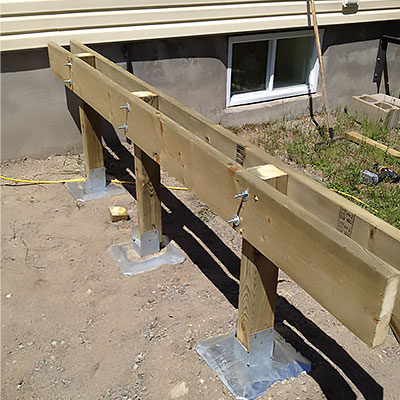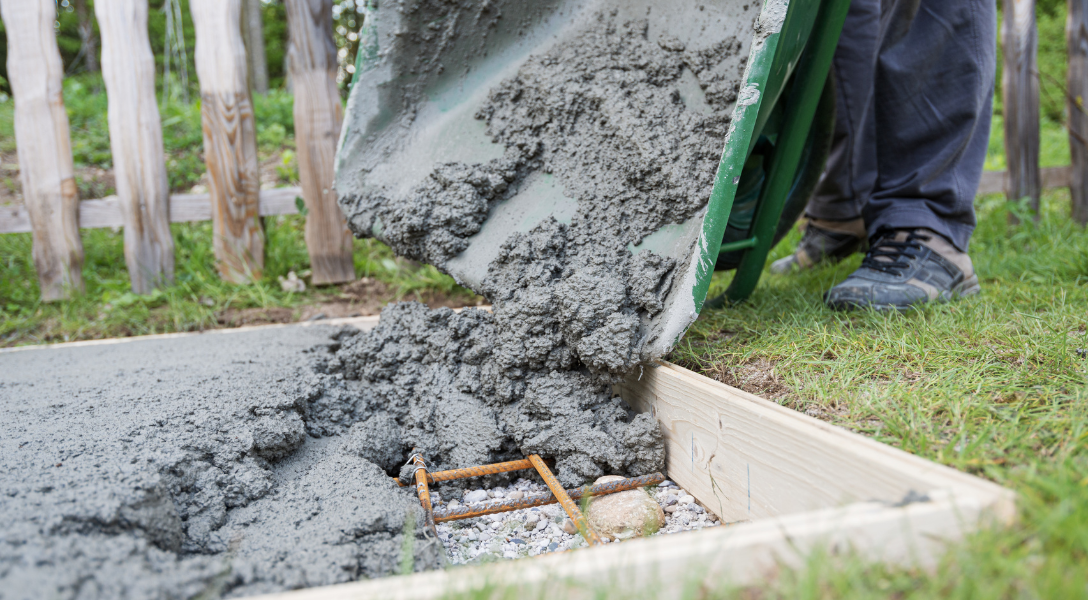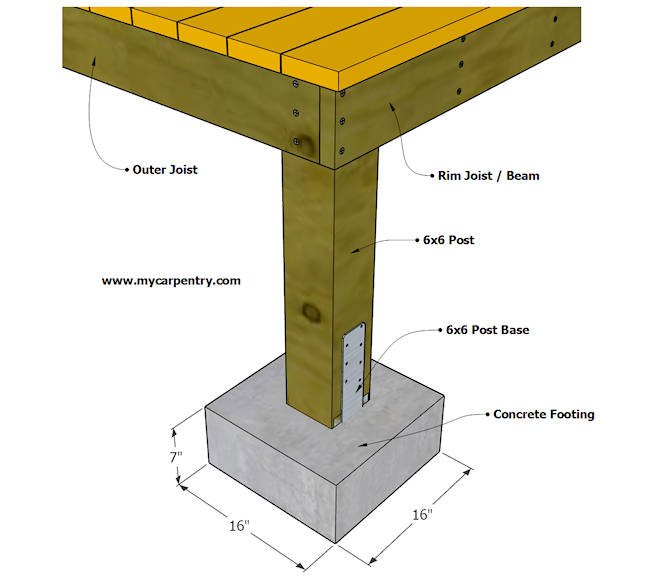Make Certain Security and Durability With Correctly Mounted Deck Grounds
Deck footings might not be the most attractive aspect of deck building, however they play a vital function in making sure security and long life. In this discussion, we will certainly explore the relevance of appropriate deck footings, elements to take into consideration during installation, various kinds of footings readily available, step-by-step setup overview, and upkeep suggestions for ensuring resilient footings.

Value of Appropriate Deck Footings
Why are correctly mounted deck footings critical for the stability and durability of your deck? The solution hinges on the basic role that deck grounds play in sustaining the weight of the entire structure. Deck grounds are the foundation on which the deck rests, transferring the tons from the deck to the ground. When grounds are not appropriately set up, it can lead to a series of problems that compromise the security and durability of the deck.
To start with, correctly installed deck footings disperse the weight of the deck evenly, preventing any type of unequal settling or sinking. This is particularly vital in locations with unpredictable soil, as it aids to mitigate the danger of the deck falling down or moving. In addition, well-installed footings make sure that the deck stays level, protecting against any architectural damage that can take place when a deck becomes uneven.
Second of all, properly mounted footings provide a strong support for the deck, preventing excessive motion and sway. This aids to preserve the structural integrity of the deck, reducing the threat of injuries or crashes. It additionally reduces the damage on the deck, allowing it to withstand the aspects and normal use for a longer amount of time.
Factors to Take Into Consideration for Deck Footing Setup
When setting up deck grounds, there are a number of vital elements to consider for appropriate installation. Different soil types have various load-bearing abilities, so it is essential to conduct a soil examination to make sure the footings can support the weight of the deck and its passengers. By taking right into account these factors, you can ensure the correct installation of deck grounds and appreciate a lasting and stable deck.
Types of Deck Grounds to Pick From
There are several different sorts of deck grounds offered for you to select from. Each type has its own benefits and disadvantages, so it's important to consider your specific requirements and the problems of your deck prior to deciding.
One typical kind of deck ground is the concrete footing. This entails excavating holes in the ground and pouring concrete into them to develop a solid foundation. Concrete footings are sturdy and give excellent stability, making them appropriate for decks in areas with difficult dirt conditions or high wind lots.
An additional option is the helical pier ground, which consists of a steel shaft with helical plates that are screwed right into the ground. These grounds are fast to mount and can be utilized in different soil kinds, consisting of sandy or clay dirts. They are also flexible, permitting for very easy leveling of the deck.
Sonotube grounds are one more prominent selection. These grounds are created by putting a cardboard tube in a hole and loading it with concrete. Sonotube footings are reasonably easy to mount and give appropriate security for smaller decks or in areas with less demanding soil problems.

When choosing the kind of deck footing, it's crucial to consider variables such as soil conditions, deck size and weight, neighborhood building regulations, and individual choices. By selecting the proper ground type, you can guarantee the security and longevity of your deck.
Step-by-Step Guide for Putting Up Deck Footings

Establish the place: Start by noting the specific setting of each footing making use of stakes and string (Deck Footings). Think about any type of local building regulations or guidelines pertaining to setback ranges
Dig the holes: Utilize a post hole miner or an auger to dig the holes for the footings. Generally, a depth of at least 36 inches is suggested for stability.
Degree the holes: Guarantee that all-time lows of the openings are degree (Deck Footings). This can be accomplished by utilizing a level or a straight board across the top of the holes
Add gravel: Location a layer of crushed rock at the end of each opening to boost water drainage and prevent the ground from sinking into the dirt over time.
Put the footing types: Put the ground develops right into the holes, ensuring they are centered and degree. Use stakes to protect them in place.
Mix and put concrete: Follow the guidelines on the concrete mix bag to prepare the concrete. Put the concrete into the footing forms, filling them completely.
Smooth the surface: Use a trowel to smooth the surface of the concrete and remove any air pockets. Allow the concrete to treat according to the producer's directions.
Maintenance Tips for Lasting Deck Grounds
Correct maintenance is crucial for ensuring the long life and security of deck grounds. By consistently checking and keeping your deck grounds, you can protect against damage and potential security dangers.
Normal cleansing is likewise crucial for keeping deck footings. Dust, greenery, and particles can accumulate around the grounds, which my website can bring about moisture buildup and decay. Cleansing the footings consistently, utilizing a brush or a stress washer, can aid prevent these issues and expand the life-span of your deck.
Along with cleansing, it is essential to keep the area around the grounds free from any blockages. Prevent piling products versus the footings or allowing plants to grow also near to them. These obstructions can catch dampness and cause the footings to degrade in time.
Lastly, routine resealing of the footings is recommended to secure them from moisture and other ecological aspects. Applying a water-proof sealer can aid stop water damages and prolong the lifespan of the footings.
Verdict
To conclude, appropriate installment of deck footings is essential for making sure stability and longevity of your deck. try this out Variables such as soil kind, tons capacity, and regional building regulations need to be thought about when choosing the appropriate type of deck grounds. Complying with a step-by-step guide for setup and regular upkeep will certainly aid to ensure the grounds continue to be durable and durable.
In this conversation, we will explore the relevance of appropriate deck footings, factors to think about during setup, various types of grounds readily available, detailed installation overview, and maintenance suggestions for making sure resilient grounds. Deck footings are the structure on which the deck rests, moving the lots from the deck to the ground.One typical kind of deck ground is the concrete ground. Insert the footing types: Put the footing forms right into the holes, guaranteeing they are focused and level.In final thought, proper installment of deck grounds is important for making sure stability and long life of your deck.